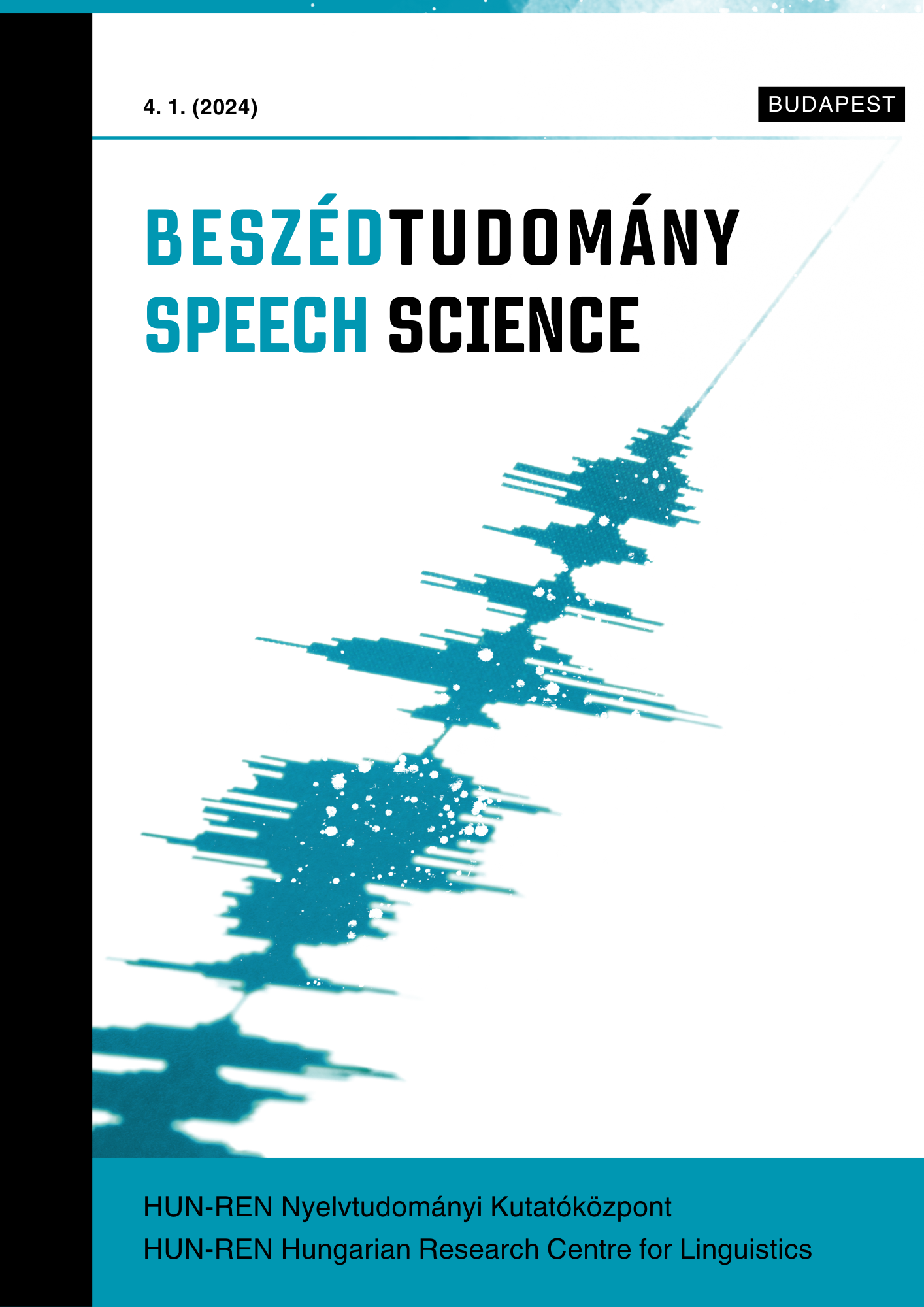Az anyanyelvre gyakorolt célnyelvi hatás gyengülésének kérdése a növekvő számú anyanyelvi ingerek hatására
Absztrakt
This acoustic analysis is focused on how an atonal L1 and a tonal L2 interacts in the case of Hungarian learners of Mandarin Chinese. In particular, this experiment intends to shed light on whether L2 Chinese tonal patterns’ effect weakens on L1 Hungarian intonation contours throughout the experiment, as the production of L1 utterances increases. It was hypothesized that in the beginning of the Hungarian L1 recordings, language learners’ production is primarily shaped by the L2-dominant bilingual mode, thus L1 Hungarian intonation patterns approximate the L2 Chinese tonal curves in their shape. However throughout the recording as language learners produce more L1 utterance, their production is hypothesized to approach gradually the standard native L1 patterns due to the weakening of the L2 tonal effect. Since we expected that L2 tonal effects are also dependent on language learners’ L2 experience, therefore we analysed two speaker groups with different levels of L2 experience. The effect of the L2 tones were analysed by the f0 curve and the duration of the vocalic section of the monosyllabic utterances recorded in four different L1 tune: declarative, imparative and two interrogative intonation patterns. Statistical analysis was submitted to GAMMs, where the f0 change was analysed along the vocalic section’s normalized duration, as well as throughout the recording by aligning the utterances along their ordinal number. Our results did not confirm the gradual weakening of L2 effect on L1 intonation patterns, rather suggest that the sudden change between L1 and L2 induces a more dynamic excursion towards the L1 language mode, which is followed by a return to the L2-dominated language mode approximating L2 tonal patterns. Regarding these results questions arise whether longer recordings with more utterances would show different outcome about the weakening of the L2 effect on L1 intonation patterns. The results of the experiment also contribute to the deeper understanding of which acoustic features Hungarian native speakers enhance along repetitions of the same L1 sentence type in monosyllabic utterances.




